



sarah jm kolberg is a film scholar and has won several awards as both an independent film producer and a writer. She has had her head in the stars since she was a child, having fallen in love with astronomy by way of Greek myth. Her favourite constellation is the Pleiades, and when she meets you she will probably ask you about yours.
West Virginia is one of her absolute favourite places, especially Green Bank, and at night you can usually find her on the Green Bank Observatory's airstrip trying to spy the Andromeda Galaxy, if she’s not challenging someone to a game of Scrabble. When playing The Resistance she’s always the spy … even when she’s not.
She has produced television commercials and films including Tesseract, written and directed by Geoffrey Alan Rhodes, which explored photographer Eadweard Muybridge’s murder of his wife’s lover and this act’s intersection with his obsession with photographing motion, and has been screened at film festivals, art houses, and museums around the world, winning several awards along the way.
After more than a decade working in state politics, she returned to graduate school to pursue her PhD and works as a public relations/political strategy consultant for a variety of clients with an emphasis on arts and cultural not-for-profits.
This past year she co-curated a major exhibition Art=Text=Art: Private Languages/Public Systems about the re-emergence of text in American art during the post-war period, particularly among queer artists, and the assimilation of these tactics by subsequent generations in a variety of social and historical contexts. She holds an MA in film and literature, an MFA in Media Arts Production, and an MA in Visual Studies. She currently teaches, and is a doctoral candidate in Visual Studies, at the University at Buffalo, where she specializes in the American and French postwar neo avant garde.
Contact her at sarah (at) lgmfilm (dot) com and she’ll happily talk about pulsars.


Dr. McLaughlin has always been fascinated by astronomy. As a child, she loved to read and gravitated towards science fiction and popular science novels. She earned her B.S. in Astronomy and Astrophysics from Penn State University in 1994 and her Ph.D. in Astronomy and Space Sciences in 2001 from Cornell University, and is now the Eberly Family Distinguished Professor of Physics and Astronomy at West Virginia University, where her research focuses on using pulsars as a tool to study exotic astrophysics, using radio, X-ray and gamma-ray observations.
Along with her husband Duncan Lorimer, also a WVU Professor of Physics and Astronomy, and Sue Ann Heatherly of the Green Bank Telescope they founded the Pulsar Search Collaboratory to engage high school students in the search for pulsars.
A significant research aim is to use neutron stars to detect gravitational waves through timing an array of ultra-precise millisecond pulsars. She is Co-Director of the NANOGrav Physics Frontiers Center, which includes over 100 scientists and students at over 40 institutions. The work that the PSC students undertake is crucial to this effort. She has been awarded an Alfred P. Sloan Fellowship and a Cottrell Scholar Award from the Research Corporation for her work.
As Producer & Scientific Advisor for little green men Dr. McLaughlin has been instrumental in securing funding and access to locations and scholars for the film. As Scientific Advisor she ensures that our scientific data is accurate and will work with the team to develop the classroom materials for educators which will accompany the film.
In her free time, Dr. McLaughlin enjoys playing the oboe and spending time outdoors. She frequents her cabin in Pocohontas County near the Green Bank Telescope, and tries to keep up with her three boys on mountain bikes, ice skates, skis, and more!
To learn more about her work visit the WVU Center for Gravitational Waves and Cosmology.
If you’d like to find out how you can support Dr. McLaughlin’s research check out her benefunder page.

The Pulsar Search Collaboratory (PSC) is a unique program that engages high school and middle school students in the search for pulsars, a type of highly magnetized collapsed star (or neutron star) which emits electromagnetic radiation as it spins.
Since its formation, more than 2,000 students from schools in more than 20 states have taken part in the PSC, analyzing thousands of data plots and making significant discoveries. More than 300 hours of data are reserved exclusively for the students’ research and students are credited with any discoveries they make. So far our students have discovered seven new pulsars, including two rotating radio transients (RRAT), a type of rare pulsar. Our first discoverer – who was 15 at the time – was invited to the White House. You can see him with President and Mrs. Obama in the preview.
In addition to providing students with an opportunity to engage in authentic pulsar astronomy research, the PSC is designed to expose students to a variety of Science, Technology, Engineering, and Mathematics (STEM careers and increase interest in STEM fields, especially among girls.
Here’s an example of a prepfold plot 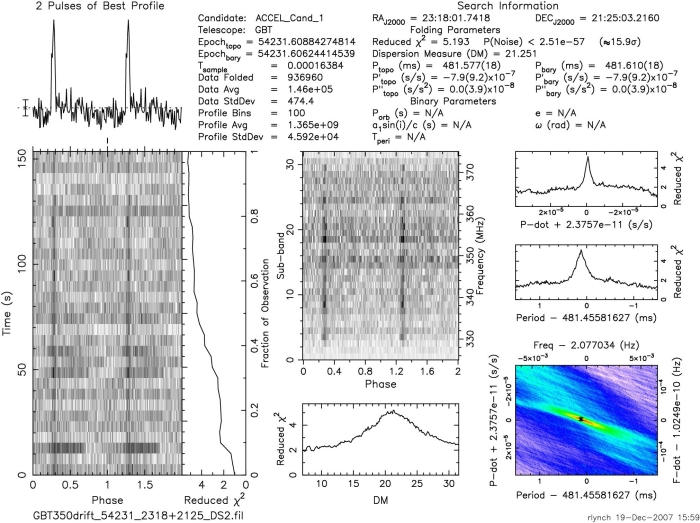 which contains data received from a specific pointing in the sky. Students learn to analyze the data in these plots to determine whether the signal is noise, radio frequency interference (RFI) or – if they’re lucky – a pulsar.
which contains data received from a specific pointing in the sky. Students learn to analyze the data in these plots to determine whether the signal is noise, radio frequency interference (RFI) or – if they’re lucky – a pulsar.
The program was established in 2008 by Drs. McLaughlin and Lorimer and Sue Ann Heatherly, the Education Officer at the Green Bank Telescope, as a partnership between the National Radio Astronomy Observatory’s Green Bank Telescope in Green Bank, West Virginia and West Virginia University in Morgantown, West Virginia. It has been funded through two National Science Foundation awards, first through the ITEST program and now through the AISL program.
If you are a student or teacher interested in forming a PSC club at your school, please visit our “Educators” section to learn how you can join the PSC.

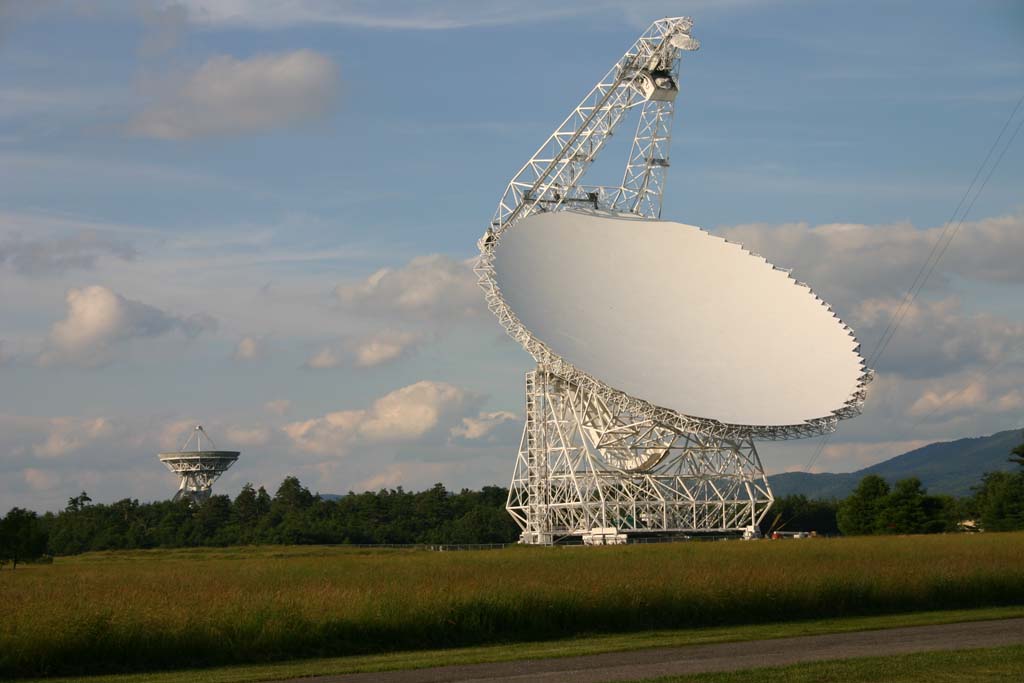
 The GBT is the primary source of data for the students’ research. Standing taller than the Statue of Liberty and weighing nearly 17 million pounds, the Green Bank Telescope is the largest fully steerable radio telescope in the world. The dish’s surface area is 2.4 acres - larger than a football field - making its large collection area perfect for detecting the very faint signals of a pulsar. Able to swivel 360˚ on its base, and tilt in any direction, its design provides the GBT with greater sky coverage than any other single dish radio telescope.
The GBT is the primary source of data for the students’ research. Standing taller than the Statue of Liberty and weighing nearly 17 million pounds, the Green Bank Telescope is the largest fully steerable radio telescope in the world. The dish’s surface area is 2.4 acres - larger than a football field - making its large collection area perfect for detecting the very faint signals of a pulsar. Able to swivel 360˚ on its base, and tilt in any direction, its design provides the GBT with greater sky coverage than any other single dish radio telescope.
Located in the incomparable beauty of southeastern West Virginia on the edge of the Monongahela National Forest, the GBT is one of several telescopes located on the Green Bank Observatory’s site in Green Bank. The site sits within the National Radio Quiet Zone: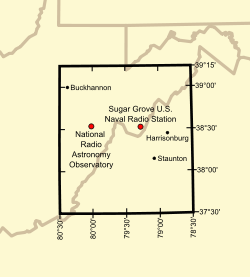 a 13,000 square mile protected area where radio transmissions (cell phones, wi-fi, microwaves etc) are restricted in order to prevent interference with the telescope’s hyper-sensitive radio wave detections. This helps ensure that the faint signals from pulsars and other stellar objects aren’t drowned out by those comparatively noisier signals.
In 2007 the GBT’s track was being repaired, which meant that it could not be rotated and tilted to point at specific areas of the sky. Instead, the scientists conducted a “drift scan” – simply collecting data as the sky drifted past while the GBT remained in a fixed position. In all, more than 130 Terabytes of data were collected. Of that, approximately 300 hours of data is reserved exclusively for the students’ research. At a rate of approximately 48 pseudo-pointings per hour of data, and each pseudo-pointing containing approximately 40 plots, that’s more than 660,000 plots for the students to analyze.
a 13,000 square mile protected area where radio transmissions (cell phones, wi-fi, microwaves etc) are restricted in order to prevent interference with the telescope’s hyper-sensitive radio wave detections. This helps ensure that the faint signals from pulsars and other stellar objects aren’t drowned out by those comparatively noisier signals.
In 2007 the GBT’s track was being repaired, which meant that it could not be rotated and tilted to point at specific areas of the sky. Instead, the scientists conducted a “drift scan” – simply collecting data as the sky drifted past while the GBT remained in a fixed position. In all, more than 130 Terabytes of data were collected. Of that, approximately 300 hours of data is reserved exclusively for the students’ research. At a rate of approximately 48 pseudo-pointings per hour of data, and each pseudo-pointing containing approximately 40 plots, that’s more than 660,000 plots for the students to analyze.
The Green Bank Telescope and its Visitors Center are open year round and are perfect for visitors of all ages. See our “Visit” section to learn more and to find out what else you can do while visiting beautiful Pocahontas County.

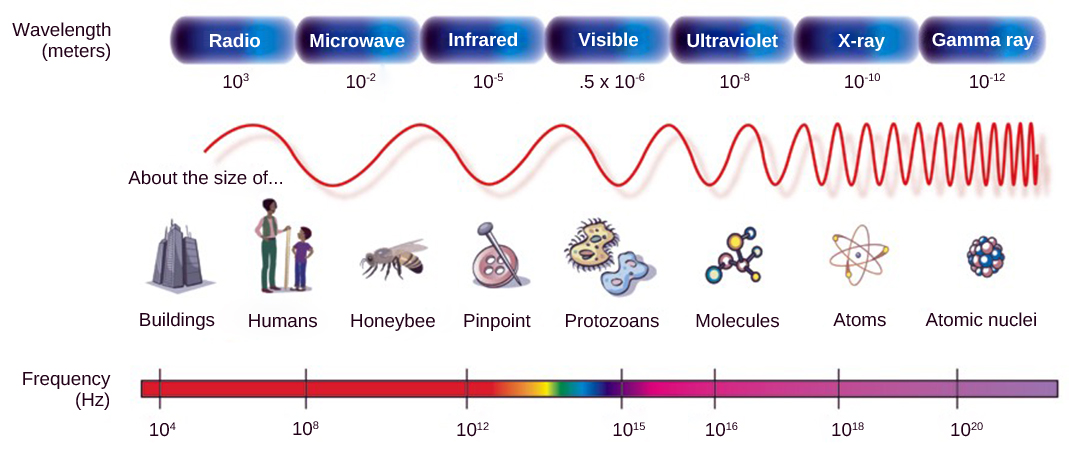 Electromagnetic energy is transmitted in waves that vary in length from the very long wavelengths of radio waves to the extremely small wavelengths of gamma rays. Different telescopes operate at different points on the spectrum. For example, the Spitzer Space Telescope detects infra-red light, the Chandra Observatory works with x-rays, and the Fermi Space Telescope detects gamma-rays. Dr. McLaughlin’s research involves utilizing a combination of these detection instruments to create a more comprehensive understanding of neutron stars.
Electromagnetic energy is transmitted in waves that vary in length from the very long wavelengths of radio waves to the extremely small wavelengths of gamma rays. Different telescopes operate at different points on the spectrum. For example, the Spitzer Space Telescope detects infra-red light, the Chandra Observatory works with x-rays, and the Fermi Space Telescope detects gamma-rays. Dr. McLaughlin’s research involves utilizing a combination of these detection instruments to create a more comprehensive understanding of neutron stars.
Unlike optical telescopes which provide visual access to celestial objects, the GBT and other radio telescopes “see” celestial objects such as comets, black holes, stars, planets, galaxies, and even the molecular composition of gasses through the detection of radio waves. Because weather doesn’t affect the detection of radio waves, the GBT and other radio telescopes are able to operate in weather conditions that would impede optical observations.
Although the name radio would seem to imply that we can hear these waves, they are silent. However, much like the way a cell phone works, they can be converted into sound.
The GBT’s very large dish facilitates the collection of radio waves, which are reflected onto the Prime Focus, and then beamed to the feed horns, which transmit the waves to the receivers, which interpret and convert them into an electronic signal. The GBT’s offset feed arm ensures that the arm doesn’t interfere with the reflected waves, making the GBT exceptionally precise.
The NRAO has an informative page explaining radio astronomy and various applications. In addition to the choices at the right, there are additional subject options accessible from the top menu by mousing over “Radio Astronomy”.


The Elk River Ramblers’ hauntingly beautiful celtic bluegrass perfectly captures the spirit of West Virginia. When we shot the interview for the film with Dame Jocelyn Bell Burnell (discoverer of the first pulsar) in Oxford, UK, she recorded a special message for the students in the PSC. The music of the Elk River Ramblers is featured in her video message, and will be featured in the film’s soundtrack.
As heard here, The Elk River Ramblers features Paul Marganian on fiddle, guitar, and vocals, Terry Richardson on guitar, and the late Alan Dutchess on mandolin, guitar, banjo and vocals. After Alan's untimely passing in January of 2013, bassist and vocalist Galen Watts joined the band.
They can usually be found playing various locations around Pocahontas County, including most Thursdays at the beautiful Elk River Inn & Restaurant in Slatyfork where they are the house band. If you’re lucky you might even find Duncan sitting in with them.

 Also known as The Impossible Girl, Kim’s album The Sky is Calling is intelligent cosmos-inspired space-pop.
Also known as The Impossible Girl, Kim’s album The Sky is Calling is intelligent cosmos-inspired space-pop.
In addition to “The Sky is Calling,” the song featured in our preview, the album features songs about planets, the big bang, stellar evolution, and the Drake Equation, a probabilistic equation to estimate the number of planets which might harbor life advanced enough to be capable of communicating with us. The Drake Equation was first proposed in 1961 in the lounge of the residence hall at the Green Bank Telescope. Today a commemorative plaque inscribed with the equation hangs in the lounge.
In addition to being thematically inspired by the wonder and beauty of space, several tracks feature sounds from both the earth and space. “The Sky is Calling” incorporates rhythm tracks created by feeding visual images of a pulsar in the Tarantula Nebula into a computer program that converts the visual data into audio data. As The Impossible Girl said, “we will be dancing to the beat of the stars.”
Follow The Impossible Girl on twitter @KimBoekbinder, and check out her companion videos on YouTube directed by the amazingly talented Jim Batt - @battsignal.

The Producers wish to thank our generous funders, without whom this film would not be possible.
 |
 |
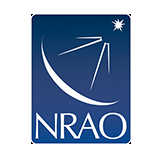 |
 |
 |
| West Virginia University College of Arts and Sciences | National Science Foundation DRL CRPA program (award #1137082) | The National Radio Astronomy Observatory | NASA's West Virginia Space Grant Consortium | The University at Buffalo’s Department of Media Study has provided significant in-kind support. |